#Co. Sligo
Text
Cyclist, 50s, dies after being found in cycle lane with serious injuries in Co Sligo | December 22, 2023 at 09:08AM
Cyclist, 50s, dies after being found in cycle lane with serious injuries in Co Sligo
Read More …
Check full articles at Source: ALPHA MAG
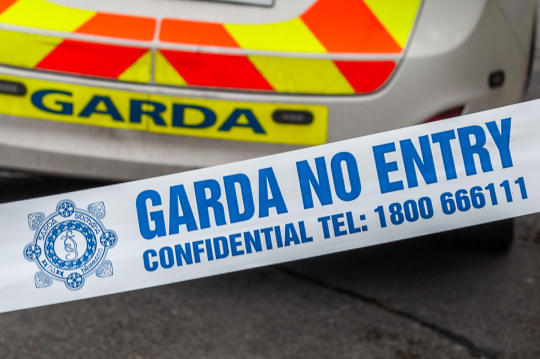
View On WordPress
#50s#Cyclist#dies after being found in cycle lane with serious injuries in Co Sligo#Politics#ShowBiz#Sport#Tech#UK#US#World
0 notes
Text
Photos of 16th-17th century Irish clothing
Extant garments in the National Museum of Ireland
Notes: The garments in this post are all bog finds which means their current color may not be their original color. Although some of these items were found with human remains, no photos of human remains are included in this post.
Killery Cóta Mór (great coat) and brogues:
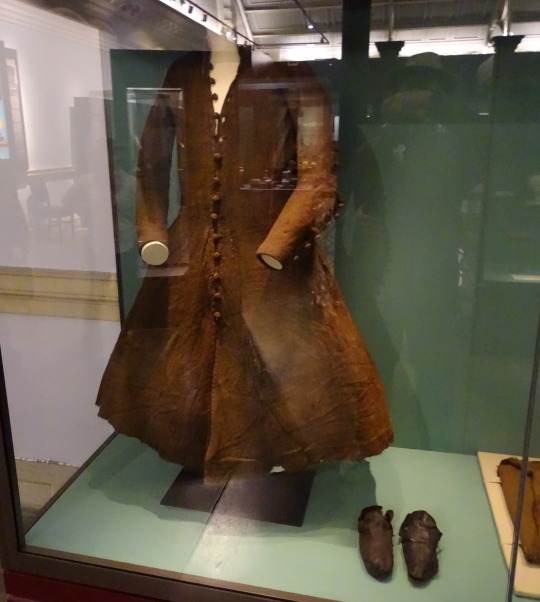
photos by hayling billy used under non-commercial, share alike license
The Killery outfit comes from an adult male bog body found in Killerry parish, Co. Sligo in 1824. It includes a cóta mór, triús, a brat, and shoes which are on display in the museum, and a sheepskin biorraid (conical hat) which fell apart shortly after it was found (Briggs and Turner 1986).
Killery triús (trews):
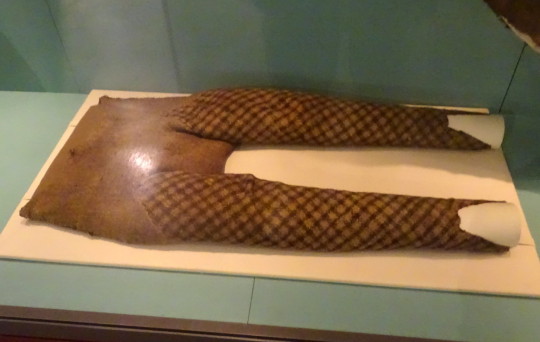
photo by hayling billy
Killery outfit with and without brat:

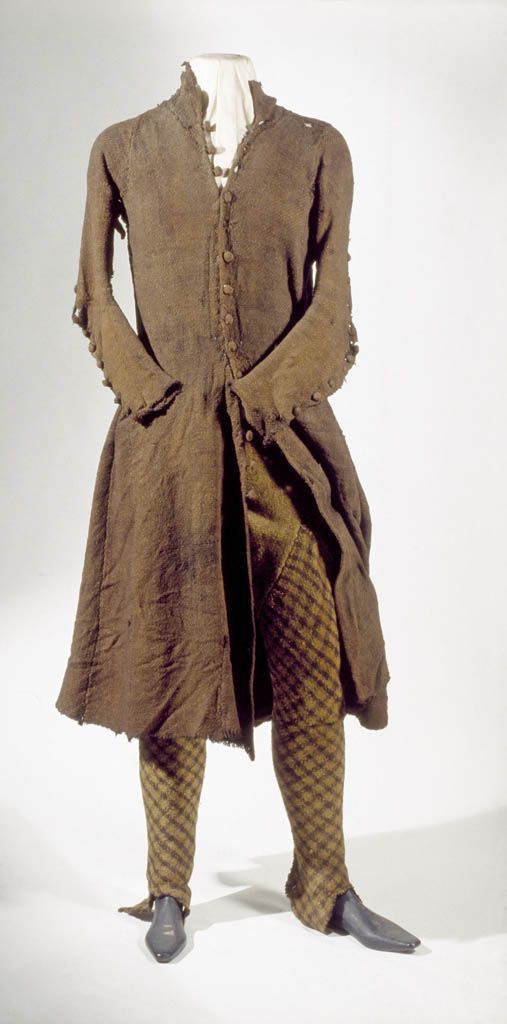
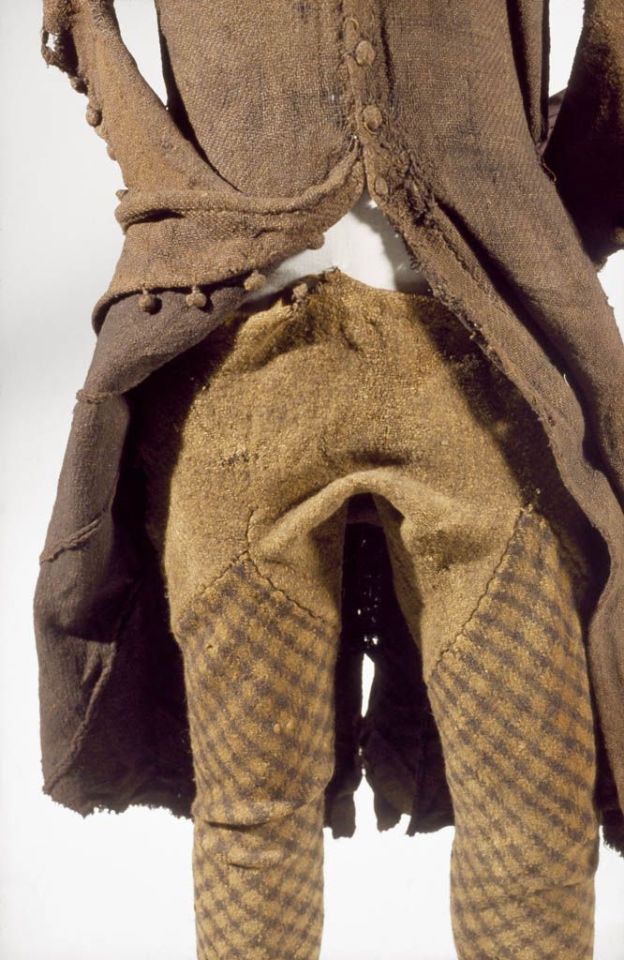
The outfit is generally dated to the 17th c. (Dunlevy 1989). It matches Luke Gernon's 1620 description of Irish men's winter apparel:
"in winter he weares a frise cote. The trowse is along stocke of frise, close to his thighes, and drawne on almost to his waste, but very scant, and the pryde of it is, to weare it so in suspence, that the beholder may still suspecte it to be falling from his arse. It is cutt with a pouche before, which is drawne together with a string."
Additional photos of the outfit: cóta front, hem, buttons, and brat.
Shinrone gown:
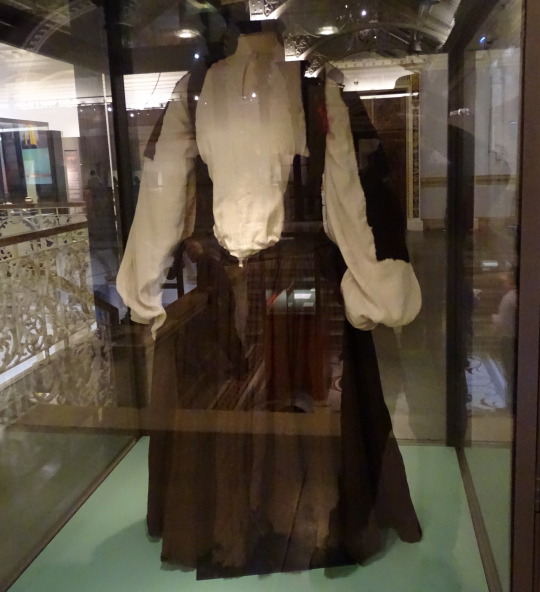
photo by hayling billy
The Shinrone gown was found in a bog in 1843 in Co. Tipperary near Shinrone, Co. Offaly. Unlike the Killery outfit, there were no human remains or other items found with it (Briggs and Turner 1986). The ends of the sleeves and possibly also the bottom of the skirt are missing. The sleeves would have had wrist cuffs or ties that allowed them to be fastened around the wearer's wrists. It probably also had loops or rings along the U-shaped center-front opening for lacing. It is typically dated late 16th-early 17th c, based on its similarity to a circa 1575 illustration by Lucas DeHeere and to the dresses described by Luke Gernon in 1620 (Dunlevy 1989, McGann 2000). It could be older however, because Laurent Vital described dresses with this type of sleeve in 1518.
Copyrighted, better quality photos: left front, right front, back Additional details: side-front, front waistline
Tipperary Cóta Mór:
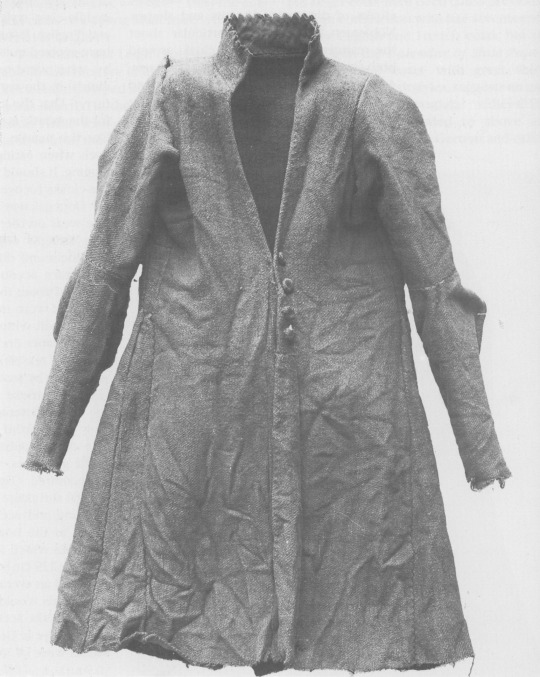

photos from Dunlevy 1989 and hayling billy
Another Cóta Mór. This one is from Co. Tipperary, exact find spot and date unknown. Like the Shinrone gown, it was not found with human remains or other items (Ó Floinn 1995). It is probably also from the 17th century (Dunlevy 1989).
Additional photos: front, side, front buttons, front detail, side
Brat and hats:

photo by hayling billy
I haven't been able to find any clear photos of the label on this display, but based on the excellent condition and the presence of the leather tie, I think this is the Meenybradden woman's brat.
Closeup of the tie:
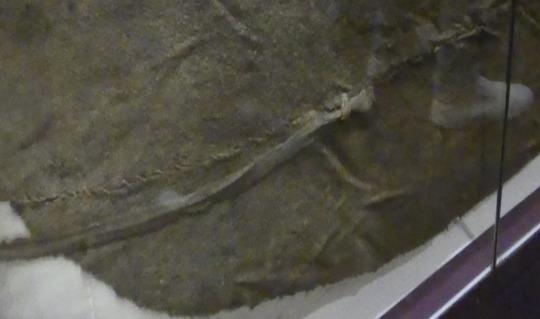
The Meenybradden woman is a bog body found in Meenybradden bog, Co. Donegal in 1978. The brat was wrapped around her as a shroud and secured with the leather tie (Delaney and Ó Floinn 1995). No other garments or artifacts were found with her, although she may have been wearing a linen garment such as a léine when she was buried. Linen tends to not survive in bogs. The Meenybradden woman has a calibrated radiocarbon date of AD 1130-1310, but some archaeologist have suggested humic contamination from the peat may be throwing off the dating. Her brat is identical in cut to others from the 16th-17th centuries (Delaney and Ó Floinn 1995).

Meenybradden brat laid flat. (photo from Delaney and Ó Floinn 1995)
Wool hats:

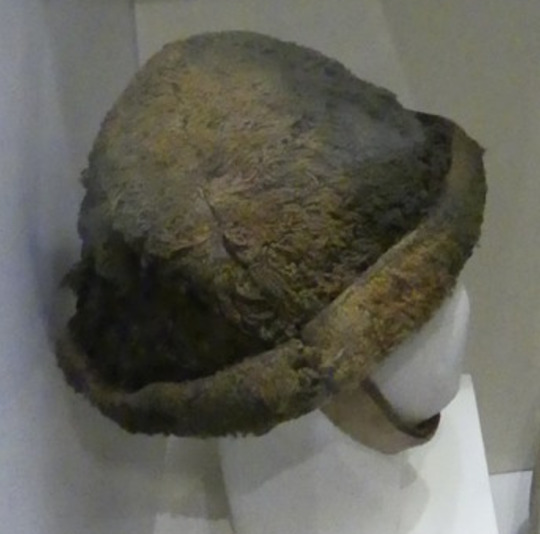
Hats from Boolabaun, Co. Tipperary made of wool felt which has been cut and sewn to form the shape. They have togs of unspun wool worked into them giving them the appearance of faux fur. Dunlevy suggests a 15th-16th c date for them (Dunlevy 1989, McClintock 1943).
Wool cloak:
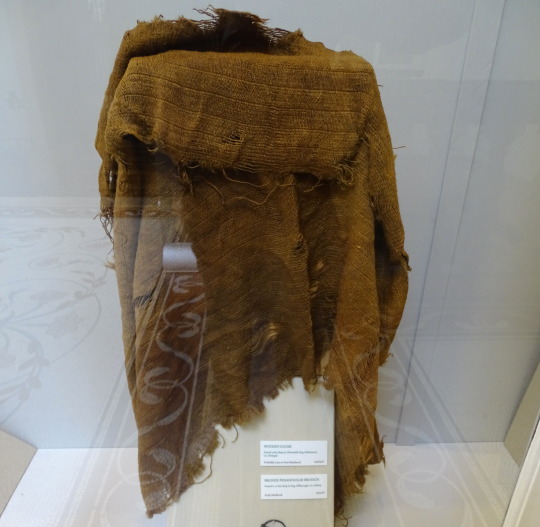
photo by hayling billy
The museum label says it's from Glenmalin bog, Malinmore, Co. Donegal, but I think this may be a mistake. According to Ó Floinn (1995), the artifact with accession number 1946:416 from Malinmore, Co. Donegal is a bale of linen. Ó Floinn's table also gives accession number 1946:416* for a group of clothing from Owenduff, Co. Mayo which includes a gown, a jacket, and a cloak. If the cloak in the photo is actually the one from Owenduff, it is probably from the 17th c (Dunlevy 1989). Alternatively, someone might have misidentified a wool cloak as a bale of linen. The museum label dates this as late Medieval to post-Medieval.
*Either Ó Floinn made a typo or this is a mistake in the museum records. Museums are not supposed to give the same accession number to 2 different artifacts. In the NMI's defense, 1946 was probably a messy year for everyone.
Bibliography:
Briggs, C. S. and Turner, R. C. (1986). Appendix: a gazetteer of bog burials from Britain and Ireland. In I. Stead, J. B. Bourke and D. Brothwell (eds) Lindow Man: the Body in the Bog (p. 181–95). British Museum Publications Ltd.
Delaney, M. and Ó Floinn, R. (1995). A Bog Body from Meenybradden Bog, County Donegal, Ireland. In R. C. Turner and R. G. Scaife (eds) Bog Bodies: New Discoveries and New Perspectives (p. 123–32). British Museum Press.
Dunlevy, Mairead (1989). Dress in Ireland. B. T. Batsford LTD, London.
Gernon, Luke (1620). A Discourse of Ireland. https://celt.ucc.ie/published/E620001/
McClintock, H. F. (1943). Old Irish and Highland Dress. Dundalgan Press, Dundalk.
McGann, K. (2000). What the Irish Wore/The Shinrone Gown — An Irish Dress from the Elizabethan Age. Reconstructing History. http://web.archive.org/web/20080217032749/http:/www.reconstructinghistory.com/irish/shinrone.html
O’Floinn, R. (1995). Recent research into Irish bog bodies. In R. C. Turner and R. G. Scaife (eds) Bog Bodies: New Discoveries and New Perspectives (p. 137–45). British Museum Press.
Vital, Laurent (1518). Archduke Ferdinand's visit to Kinsale in Ireland, an extract from Le Premier Voyage de Charles-Quint en Espagne, de 1517 à 1518. translated by Dorothy Convery and edited by me. https://irish-dress-history.tumblr.com/post/721163132699131904/laurent-vitals-1518-description-of-ireland
#16th century#17th century#irish dress#dress history#gaelic ireland#historical men's fashion#historical women's fashion#bog finds#irish history#historical dress#brog#bratanna#irish mantle#headwear#triús#cóta mór
60 notes
·
View notes
Note
Not from the ask list but the characters in ur fics as Irish counties and why?
anon, this has absolutely sent me. i have genuinely never seen something more up my alley.
let's start with characters we can pull from the series for ireland's six superior counties, shall we...
antrim = oliver wood
a county full of lads who've never met a spivvy tracksuit they don't think is the height of fashion, and who have a vastly inflated sense of their success at sports.
armagh = tom riddle
armagh has a [deservedly] bloody reputation. he could settle down in the murder triangle. he'd like that.
down = draco malfoy
people who live in co. down really like thinking they're better than the rest of us just because it's easy for them to get to belfast [lads, how's that something to boast about?], so they have to be the series' whiniest flop.
fermanagh = rubeus hagrid
fermanagh is full of docile lads who build things, in my experience.
londonderry = ron weasley
canonically gorgeous, gorgeous girlies live in this fine county - by which i mean, of course, that i do. we deserve to be represented by the series' most gorgeous girly. and a ginger sweetheart with six siblings [so you know which side of the sectarian divide his parents are on...] would go down a storm with our mams.
tyrone = harry potter
my brother once had his nose broken in a pub in strabane, which doesn't sound particularly interesting until you realise that my brother is a priest.
by which i mean - a county filled with people who are reckless, quick-tempered, and always ready to throw hands? it can only be represented by one man...
---
and then the rest...
carlow = quirinus quirrell
the most interesting thing there is a big rock.
cavan = percy weasley
everyone i've ever met from cavan has been really boring and really tight. so there's that.
clare = ginny weasley
because it's gorgeous, in a not like other girls way.
cork = albus dumbledore
look at this canon line and tell me dumbledore's not a cork man...
"In fact, being — forgive me — rather cleverer than most men, my mistakes tend to be correspondingly huger.”
donegal = sybill trelawney
always away with the fairies up there... and always drunk too.
dublin = walburga black
everyone you've ever met who lives in dublin is genuinely shocked to discover that the rest of the world exists beyond the m50. it's not not giving "has never set foot in muggle london and would die before she did".
galway = arthur and molly weasley
galway is the home of the nation's sophisticated [and, apparently, sexually adventurous] culchies - which fits two people from clearly quite distinguished backgrounds who nonetheless live the way they do...
kerry = gilderoy lockhart
you will never see american tourists get scammed more glamorously than in kerry.
kildare = regulus black
considerably less interesting than - and devoid of identity in comparison to - its neighbour, dublin.
kilkenny = charlie weasley
all they do is have red hair and hurl.
laois = daphne greengrass
on account of her irrelevance.
leitrim = sally-ann perks
on account of her irrelevance.
limerick = bellatrix lestrange
limerick used to be known as "stab city". she'd fit right in.
longford = mungundus fletcher
gombeen men abound.
louth = myrtle warren
because they [by which i mean the two people i know who were born there...] are always fucking moaning.
mayo = remus lupin
perpetually mopey, unless they reckon they're great at something.
meath = cormac mclaggen
they wish they were as class as the lads in dublin.
monaghan = cuthbert binns
genuinely couldn't locate it on a map.
offaly = grawp
i mean, who fucking knows? the entire place is a bog.
roscommon = aberforth dumbledore
you can guess why...
sligo = fred and george weasley
wheeler dealers, the lot of them.
tipperary = fleur delacour
the home of gorgeous, gorgeous girlies with striking accents.
waterford = dobby
they love a good strike.
westmeath = hermione granger
not somewhere you'd expect you'd choose to live if you were a bit of a know-it-all. and yet.
wexford = neville longbottom
they love to bang on about the soil.
wicklow = marge dursley
she drives a range rover and looks down on anyone who farms, change my mind.
[other answers from this ask game]
#asks answered#very normal fic writer asks#northern ireland posting#republic of ireland posting#why have i done this
20 notes
·
View notes
Text

"Green Hills Of Sligo" is an original acrylic painting of the hill called Knocknarea in Co. Sligo, Ireland, viewed from Strandhill Beach. This one is available! Dm me for details and the link, or to start a commission!
33 notes
·
View notes
Text

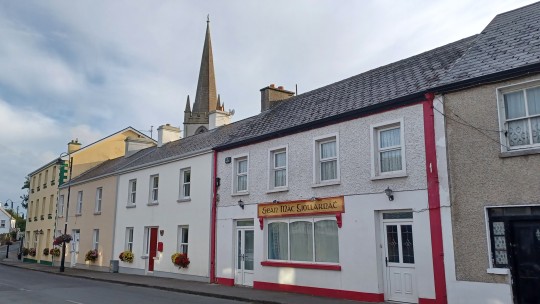

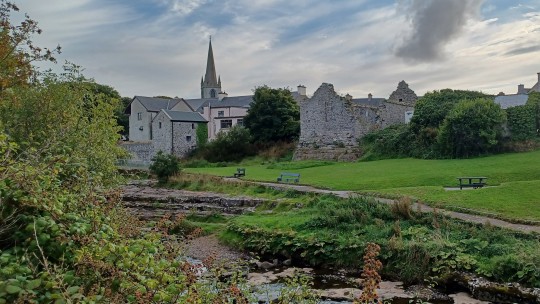

Happy St. Patrick's Day everyone!
Please enjoy this little photodump with pics from my vacation in Easkey, Co. Sligo, and Ballina, Co. Mayo, last year.
5 notes
·
View notes
Text

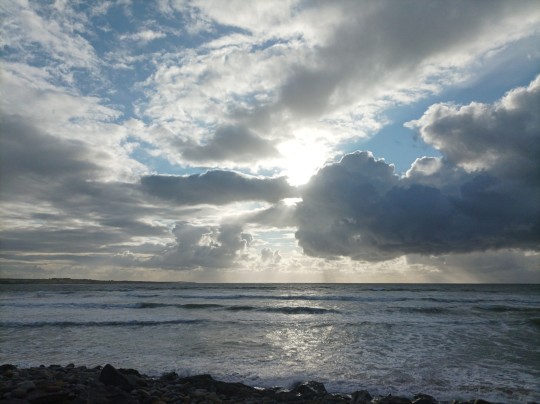

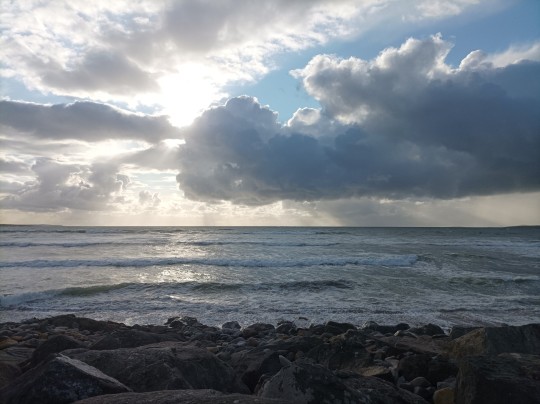
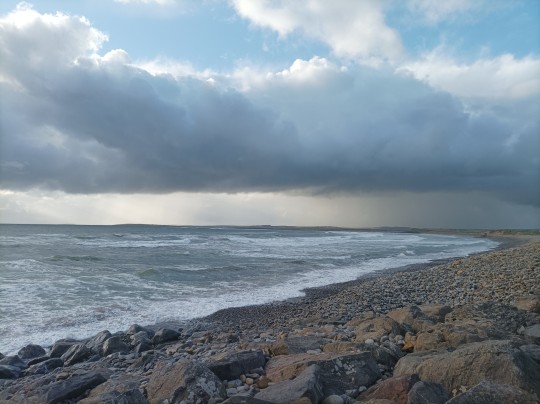
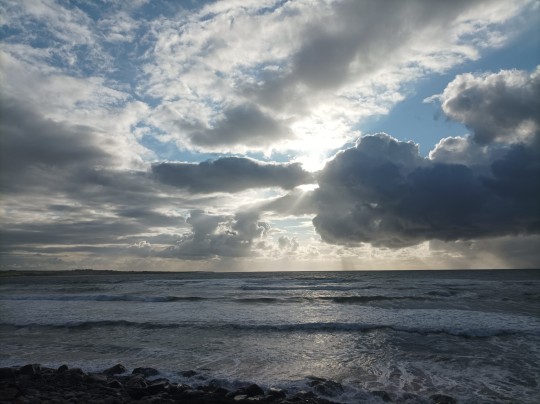
An Leathros, Co. Sligo, Ireland
11 notes
·
View notes
Text


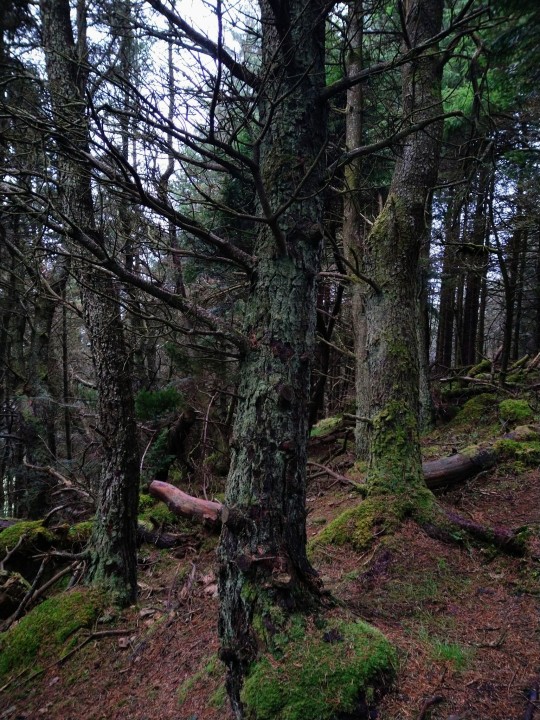

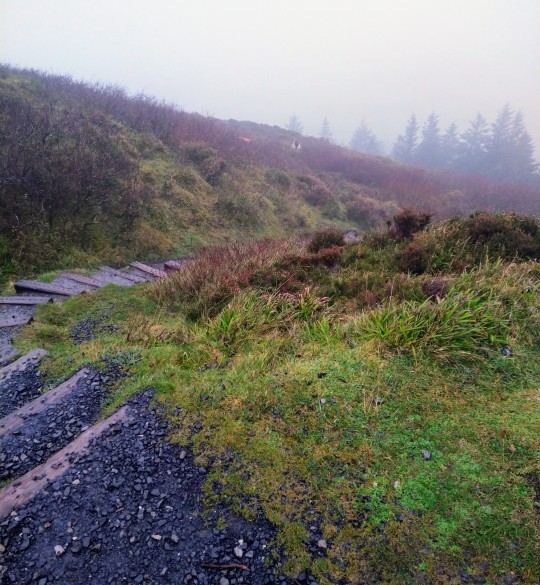
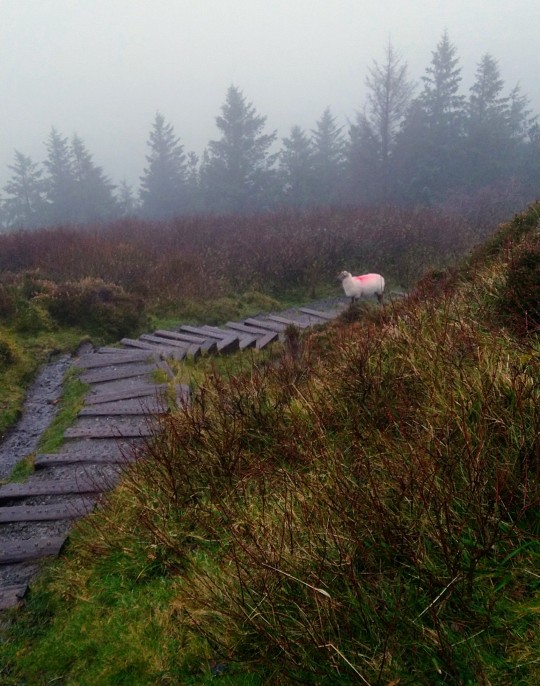
Hiking Knocknarea, Co. Sligo, Ireland
November 2022
21 notes
·
View notes
Text
Medb's Cairn | Knocknarea, Co Sligo
On the summit of Knocknarea is a large cairn about 55 metres (180 ft) wide and 10 metres (33 ft) high, making it the largest such cairn in Ireland outside the Brú na Bóinne complex in Meath. Although it remains unexcavated, and is one of the biggest of such monuments still unexplored, it has many of the features of a classic passage tomb. It is known in Irish as Meascán Méabha or Miosgan Meadhbha…

View On WordPress
11 notes
·
View notes
Text
Cyclist, 50s, dies after being found in cycle lane with serious injuries in Co Sligo | December 21, 2023 at 09:08AM
Cyclist, 50s, dies after being found in cycle lane with serious injuries in Co Sligo
Read More …
Check full articles at Source: ALPHA MAG

View On WordPress
#50s#Cyclist#dies after being found in cycle lane with serious injuries in Co Sligo#Politics#ShowBiz#Sport#Tech#UK#US#World
0 notes
Note
I’m wondering if you have any examples of Irish clothing from the early 1600s (around 1610-1615)? I haven’t been able to find much from this era so I’d appreciate any sources or museum collections that you could recommend.
Starting this out with the caveat that if you're looking for the same level of detail and precision that we have for English dress history in this period, you are going to be disappointed. The types of English primary sources we have for this period (well-dated detailed paintings, well-preserved rich-people clothing, wills, printed books, etc) just don't exist for Ireland. There also seems to be much less research interest in 16th-17th c. Irish dress history, so there isn't nearly as much for secondary sources (books, articles etc.).
You don't mention if you are interested in a specific region in Ireland. Ireland in the early 17th c. was a pretty heterogeneous place. People in Dublin and Waterford wore English-influenced styles. According to British-appointed solicitor-general Sir John Davies, by 1606 a few of the wealthier people in Connacht had started wearing English dress, but many others were still wearing Irish clothing. Ulster was a mix of Irish who were wearing Irish dress and incoming English and lowland Scots settlers.
All of the extant Irish clothing I know of from the early 17th c. comes from either bogs or archaeological excavations. It looks like you've already seen my post on extant garments at the NMI. The NMI also has a couple of felt hats that might be early 17th c. This one is from Knockfola, Co. Donegal. It originally had a decorative cord or band where the pale line is:

There are also another cóta mór and brat, found on a bog body from Leigh, Co. Tipperary, which I don't think the NMI has on display. I did not bother to include them in my post, because they are so similar to the ones from Killery, Co. Sligo, but the fact that these have been found in multiple places suggests that they were common, widely-used garments.
The other major garment-find from this period is the Dungiven outfit which is in the Ulster Museum. a short video The bright blue thread was added by a modern conservator; it's not original. (Side note: The identification of this outfit has gotten unfortunately politicized. Tartan trews were worn by both the Irish and the Scots during the 17th century (McClintock 1943, Dunlevy 1989). The presence of tartan should not be used to draw conclusions about the ethnicity of the wearer.) The primary publication for this outfit:
Henshall, Audrey, Seaby, Wilfred A., Lucas, A. T., Smith, A. G., and Connor, A. (1961). The Dungiven Costume. Ulster Journal of Archaeology, 24/25, 119-142. https://www.jstor.org/stable/20627382
The one other reasonably-well preserved outfit that has published on is from a child burial from Emlagh, Co. Kerry, now at University College Cork. Shee and O'Kelly give it a late 17th c date, but they largely base this date on the presence of a rather generic-looking comb. IMO the outfit could easily be early 17th c.

The Emlagh gown, photographed on a living 8-year-old child who was wearing a sweater and skirt underneath. (The 1960s was a different time.)
The bodice has a wrap-front closure with a back and button-up sleeves similar in cut to the Killery cóta mór. The skirt is a pleated rectangle with the pleats sewn in vertically, somewhat like the Shinrone gown. Publication:
Shee, E. and O'Kelly, M. (1966). A Clothed Burial from Emlagh, near Dingle. Journal of the Cork Historical and Archaeological Society, 71(213), 81-91.
There are also, frustratingly, a bunch of fragmentary clothing finds at the NMI which might be 17th c, but no one seems to care enough to do publications on them, and NMI Archaeology still does not have their collection on-line, so they are useless to us.
The typical Irish shoe for this period is known as a brogue (also called a Lucas type 5 by archaeologists). broguesandshoes.com has photos, a pattern, and construction information.
Unfortunately, the illustrations from Speed's map are the only images I know of from this specific period.
If you want details on what materials were used, I recommend Susan Flavin's dissertation. It's about the 16th c. economy, but things didn't change that much between 1599 and 1601. free download here
If you don't mind wading through early modern English and a bit of period-typical prejudice, I recommend reading A Discourse of Ireland, by Luke Gernon written in 1620. His description of Irish clothing starts halfway down p. 356.
Finally, if you can find them, Dress in Ireland by Mairead Dunlevy (1st ed. 1989) and Old Irish and Highland Dress by H. F. McClintock (1st ed. 1943, 2nd ed. 1950) are the best books I know of for this period.
11 notes
·
View notes
Photo

Kissing Stone Cromlech and Circle, Carrowmore, Co. Sligo
William Alfred Green (1870–1958)
Ulster Folk Museum
54 notes
·
View notes
Text

Dr Weir's 5 free Irish ME/CFS talks in Cork/Dublin/Galway/Limerick/Sligo, May 2023
The Irish ME/CFS Association is pleased to announce that it has arranged for Dr William Weir, a leading international ME/CFS expert from the UK, to give 5 ME/Chronic Fatigue Syndrome talks in Ireland in and around international ME/CFS Awareness Day, May 12 May. The talks entitled "ME/CFS: Past, Present and Future" will include questions-and-answers sessions.
Each talk will be followed by a chance to chat to others over complimentary tea/coffee/herbal tea/water and biscuits.

The talks will take place in the following venues:
- Dublin
Wednesday May 10 2023 - 7:30 PM
Clayton Hotel Dublin Airport, K67 X3H5
https://www.claytonhoteldublinairport.com/
Car parking: Complimentary for guests attending a meeting/event at the hotel
Location: see here https://www.claytonhoteldublinairport.com/airport-parking/find-us/
24-hour courtesy bus to & from the airport (useful as there are a lot of transport links to the airport)
This talk is being hosted by Vera Kindlon, the Association’s chairperson.
- Cork
Thursday May 11 2023 - 7:30 PM
The Kingsley Hotel, Victoria Cross, Cork, T12 P680.
https://www.thekingsley.ie/location/
Lots of free car parking
Location: see here: https://www.thekingsley.ie/location/
This talk is being hosted by Michelle Dinn, coordinator of the Cork ME/CFS Support Group, and Ashling O’Leary.
- Limerick
Friday May 12 2023 - midday
Limerick Strand Hotel, Ennis Road, Limerick City, V94 03F2. https://www.strandhotellimerick.ie/
Car parking on site): 90 minutes complimentary parking €2.50 per hour after this
Location: see here https://www.strandhotellimerick.ie/map-page/
This talk is being hosted by Sarah Warde, co-ordinator of the Limerick ME Self-Help Group.
- Galway
Friday, May 12 - 7:30 PM
Maldron Hotel Sandy Road The Connacht Hotel, Old Dublin Road, Galway H91 K5DD
(Not to be confused with the Maldron Oranmore)
https://www.maldronhotelsandyroadgalway.com/
Free parking for attendees
Location: https://www.maldronhotelsandyroadgalway.com/location/
Take the exit for Liosban Industrial Estate at the N6/N84 junction (some of the road marking have it written as L'ban on the lane you go into), and then a right turn into the hotel car park.
This talk is being hosted by Orla Ní Chomhraí, secretary of the Irish ME/CFS Association and coordinator of the Galway ME/CFS Support Group.
-Sligo
Saturday, May 13 – midday
Radisson Blu Hotel & Spa, Ballincar, Rosses Point Road, Sligo, F91 XW7Y
https://www.radissonhotels.com/en-us/hotels/radisson-blu-sligo-spa
Free parking
Location: https://bit.ly/3Yr34r6
This talk is being hosted by Ruth Flood
Admission: Free. We don’t take pre-bookings but we expect the rooms will be big enough to hold the numbers we expect to attend.
Mask wearing is encouraged for the talk and question-and-answer session of the event. After that, when the tea/coffee/herbal tea/water and biscuits are served, many if not most people probably won’t be wearing masks (so some people may choose to leave before that).
If you would like further information and/or be kept up-to-date with future events, please contact us at [email protected] or our voicemail 01-235 0965.
2 notes
·
View notes
Text
Tracing the old Burma Road
The disused Irish railway that runs from Claremorris, Co. Mayo via Kiltimagh and Charlestown to Colloney, Co. Sligo is known as the ‘Burma Road.’
This last saw trains in the mid-1970s, yet much of the track and right-of-way remains intact.
A railbike operation is based at the old station in Kiltimagh.
After St. Patrick’s Day, Kris and followed a portion of the Burma Road on our drive toward…
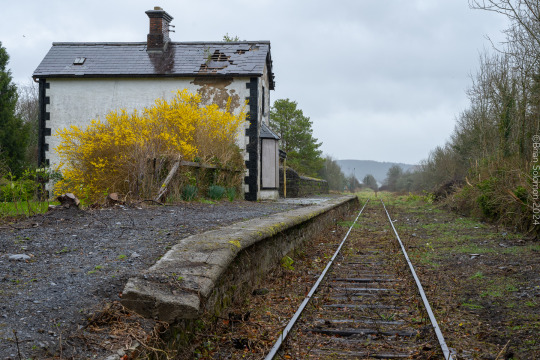
View On WordPress
0 notes
Text
Primary sources from a beach in Easky Co. Sligo… looking at seaweed, water & shells and how they sit/flow in response to movement of the sea…

Rock pools are created and water trickling back to the sea from them

Limpet shells cling to rocks to prevent movement
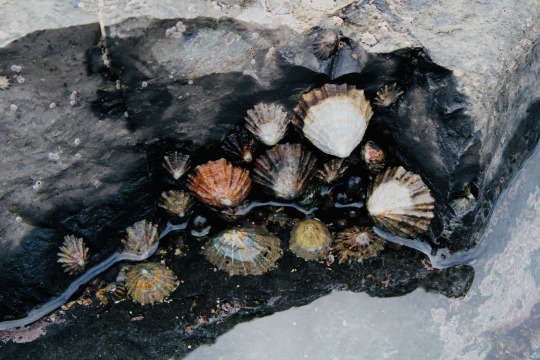

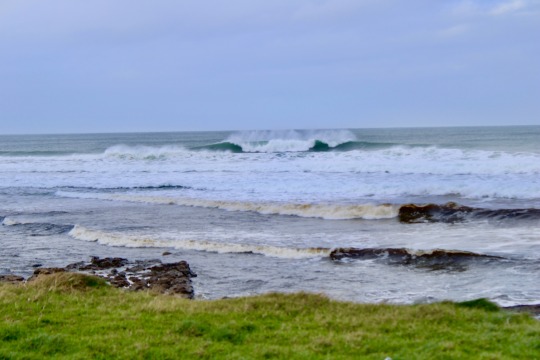
Seaweed is dispersed across the beach or in rock pools


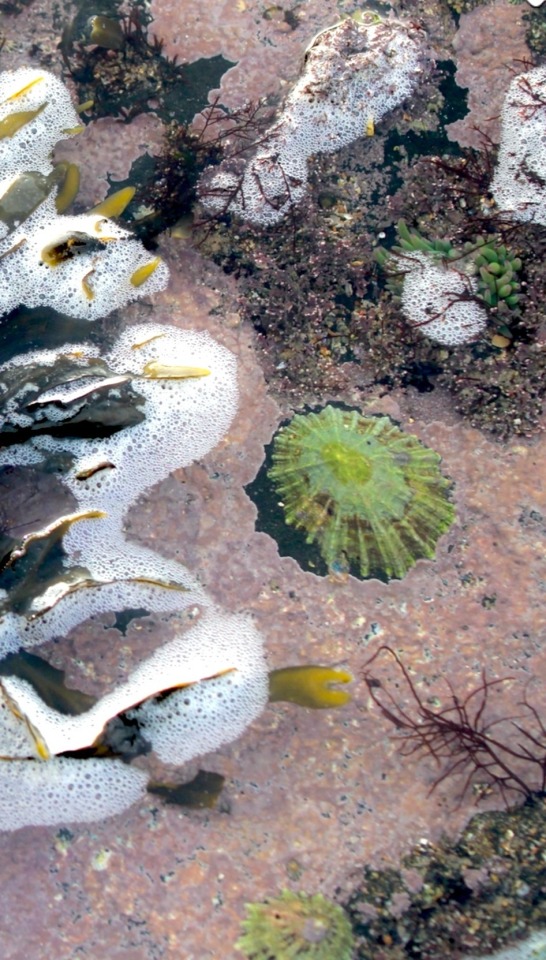
0 notes
Text
0 notes